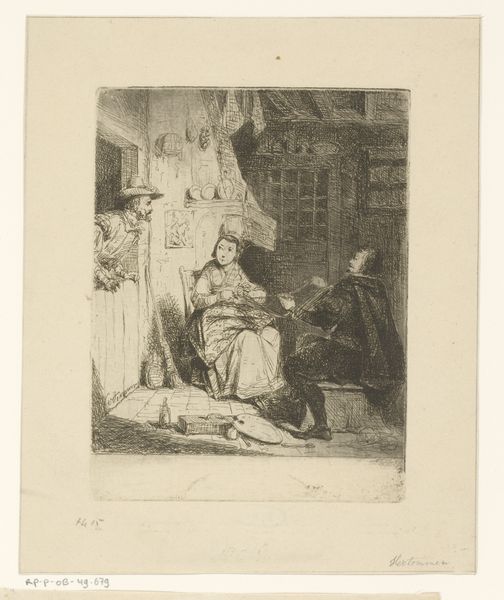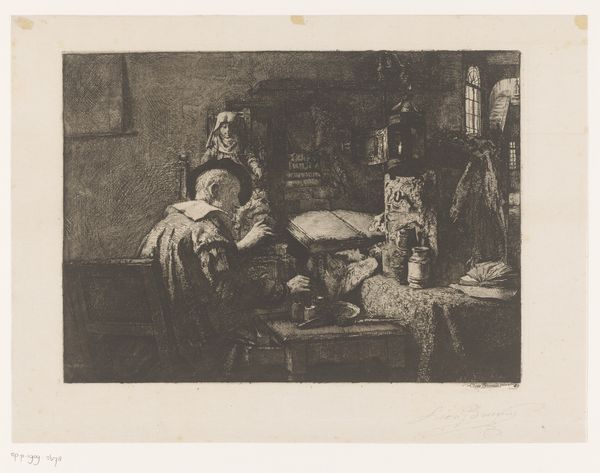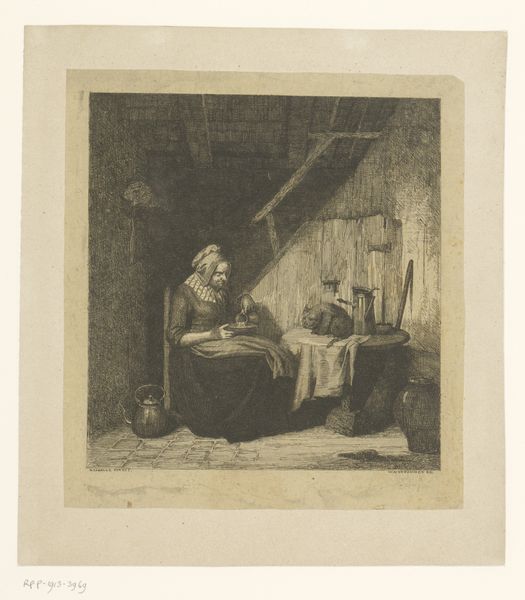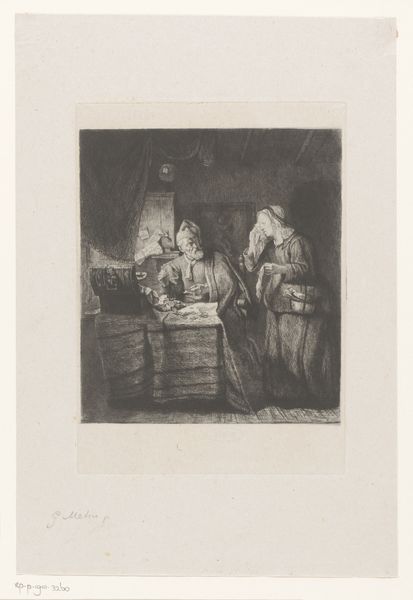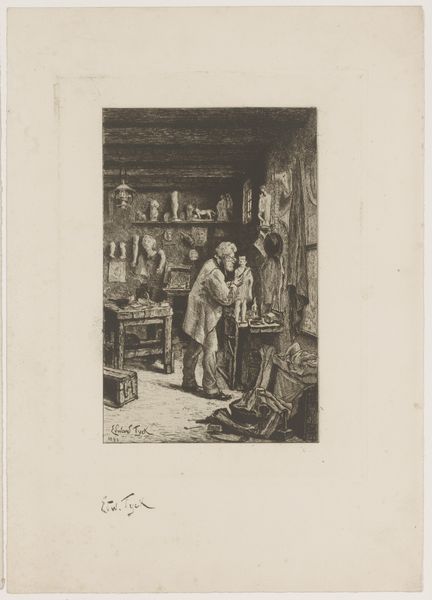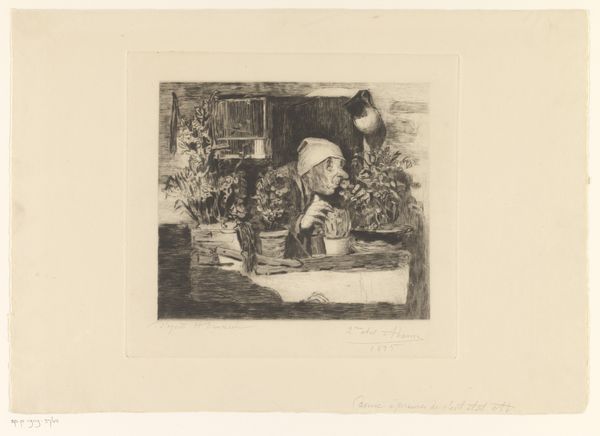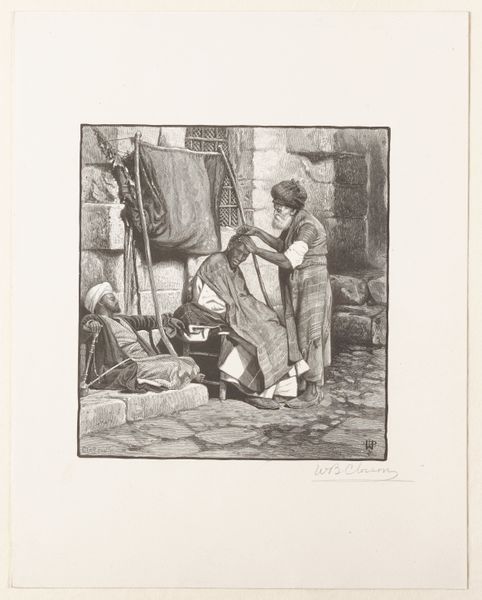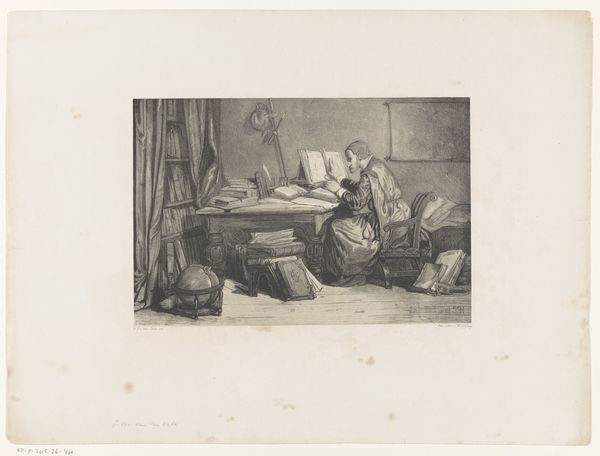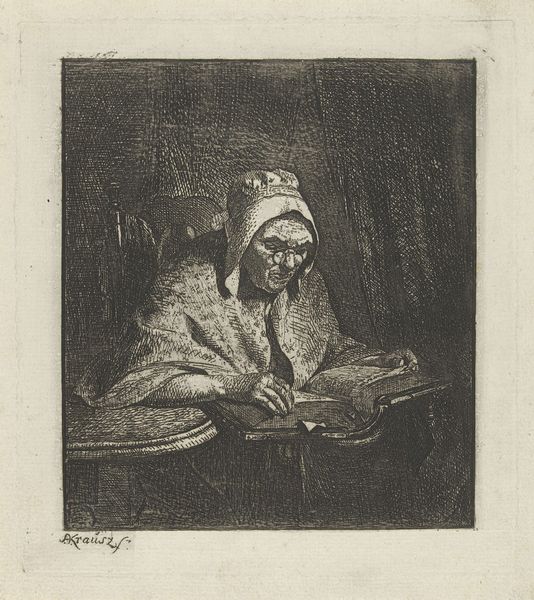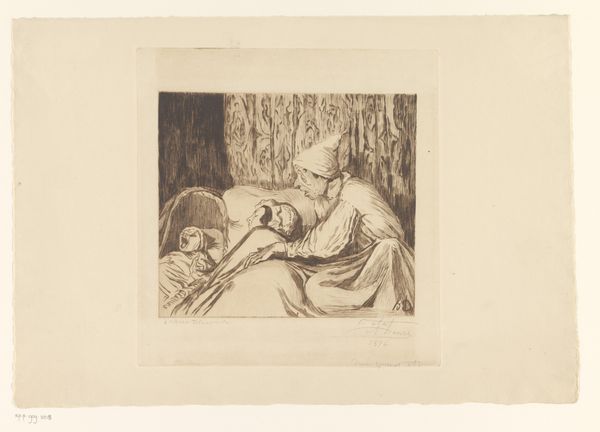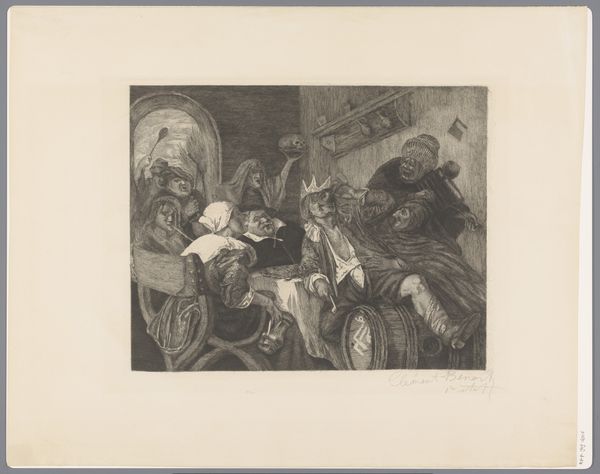
print, etching
# print
#
etching
#
genre-painting
#
realism
Dimensions: height 458 mm, width 272 mm
Copyright: Rijks Museum: Open Domain
Curator: Auguste Danse’s 1896 etching, "Kind krijgt billenkoek van een oude vrouw," translates to “Child Gets Spanked by an Old Woman.” What is your immediate read of this, viewing it through a contemporary lens? Editor: Stark. My eye is drawn directly to the drama, the dark lines against the light paper really highlighting the stark contrast in power between the figures, that small child held at an awkward angle as the looming woman is about to strike. It evokes a visceral discomfort. Curator: It certainly holds a disquieting quality today, doesn't it? Etchings, particularly genre scenes like this, were incredibly popular ways to disseminate imagery in the late 19th century, reaching a broad audience through prints. There’s a performative element at play, and this punishment, in a domestic space nonetheless, may well signify a broader moral lesson, especially regarding female authority. What do you think of how she's being depicted? Editor: Considering the socio-political implications, her image is layered with possible readings, from caregiver dispensing deserved correction to, potentially, a figure symbolizing a restrictive social order. The genre setting reinforces that it may reflect the prevalent, accepted societal norms of discipline. I do wonder about its intended meaning though and who had access to these etchings? Curator: The child's averted face adds an ambiguity; we are shut out of the emotion, aren't we? Danse is playing with established genre painting, using everyday life as a setting for exploring a dynamic charged with emotions—fear, power, obedience. I consider, what is it reflecting? Was this how many children were raised during the late 19th century? It could be a representation or an indictment, which speaks to its resonance even now. Editor: The print media gave art a voice in public debates on social behavior. Danse could very well be offering social commentary. Thinking about this, seeing how images and stories construct, reinforce, or even challenge behavior norms offers insight on cultural history as well as a moment to self-reflection today. Curator: Agreed. Even in such an intimate space of home and family, the image ripples outward into a network of power dynamics and beliefs, something about how a child should behave but most significantly how people should respond to bad behavior. I found that fascinating. Editor: I, too, found its lingering presence and unsettling tension, revealing so much more. It truly does showcase how artworks operate as carriers of memory and ideological frameworks.
Comments
No comments
Be the first to comment and join the conversation on the ultimate creative platform.
